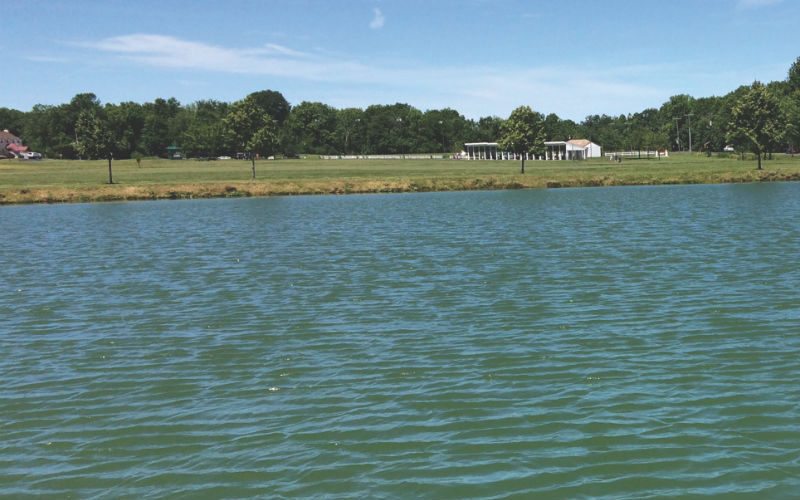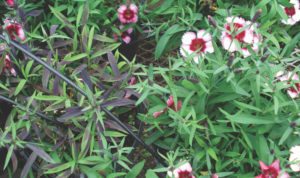
Considerations on Alternative Water Sources for Urban Irrigation
We have been growing plants and crops in cities for thousands of years. These have ranged from aesthetically pleasing ornamental landscapes and parks to urban gardens and farms. Some scholars have proposed that these agricultural activities have not preceded cities, but cities instead have actually inspired agriculture throughout history. Along with soils, water and its management through irrigation have been the foundation of these urban agricultural activities. A look at the use of fresh water resources on a worldwide basis do point at agriculture as the largest user, with irrigation accounting for about 70 percent of global water withdrawals.
Urbanization, population growth, industrialization and water-requiring energy production are creating a huge competition and demand for good quality and potable water resources. These issues are exacerbated by frequent and extended droughts like the ones afflicting major regions of the United States. The recent drought in California, for example, led to water conservation policies that required water districts statewide to cut usage by an average of 25 percent during 2013-2014, basically banning urban irrigation with municipal tap water, and actually decimating several agricultural and horticultural crops.
Among the strategies to deal with scarce water quality resources in urban areas, we can think of a thoughtful selection of crops and plants that are water-use efficient, native and/or adaptive (to local precipitation and evapotranspiration-ET demands), use of water-conservation practices like mulching and sensible irrigation technologies (e.g., drip, subsurface, ET controllers, moisture sensors, etc.) and practices (i.e., deficit-irrigation). Furthermore, the use of alternative irrigation water sources like rainwater, stormwater, reclaimed, A/C condensates and residential graywater, all of the sudden become potentially viable sources to lessen our urban irrigation dependence on limited high-quality and potable water resources.

v Desirable or ideal irrigation water source
w Brackish water from the Hueco Bolson aquifer in New Mexico-Texas
x Reclaimed water from the San Antonio Water System (Texas)
y From various graywater sources from regions in USA, U.K. Australia and Sweden
v Collected from pilot-scale and full-scale residential roofs of different material composition (Texas)
Rainwater and Stormwater
Depending on how they are collected and stored, these water sources potentially could have the best chemical quality (Table 1) compared to a conventional “ideal” irrigation source, particularly rooftop-collected rainwater. Rainfall frequency and limitations in storage capacity are two of the conditions that might be restricting a more extensive use of these sources for extensive urban irrigation purposes. There is a good deal of information available on how to capture, store and treat these water sources from simple residential set-ups to more complex, commercial settings.
Municipal Reclaimed Water
This source is derived from urban wastewater (drainage effluents, which might include stormwater) that has undergone a series of treatments before released to the environment or be suitable for reuse. Among alternative water sources, this has been extensively used in irrigation of golf courses, large corporate and municipal parks and landscapes throughout the United States. Depending on the chemistry and origin of the primary water sources producing the wastewater in a municipality, and the degree of wastewater treatment, the chemical quality of reclaimed water can vary significantly and have similar and undesirable drawbacks as mildly saline or brackish water, with relatively high levels of total salinity and undesirable specific ions (Table 1).
For instance, reclaimed water produced by the San Antonio Water System (SAWS), the largest municipal water treatment facility of its kind in the United States, is fairly good, with an average EC of 1.1 dS/m, 180 mg/L of bicarbonate-alkalinity, 150 mg/L of chloride and 100 mg/L of sodium, all levels that are slightly to moderately higher than those recommended for woody plants (i.e., ornamental and fruit trees/shrubs), but still adequate for most annuals and grasses (like vegetables, cereals, flowering and bedding plants). As a generic observation, reclaimed waters from the western, drier/arid parts of the United States will likely have more challenging chemistries (higher salinity, pH, alkalinity and undesirable toxic ions) compared to wastewaters produced in the eastern regions that receive higher annual precipitations.
Availability and supply of reclaimed water is unfortunately limited, as its collection (i.e., original raw sewage effluent), treatment and subsequent distribution are strictly regulated, and use a separate pipeline system accessible to only few large end-users. Depending on the final quality of reclaimed water, its use in urban irrigation will likely require use of modified sprinklers or drippers to minimize direct contact with the foliage of plants, to reduce salt scorching. These precautions are often required to minimize the risk of human exposure to the recycled water, due to concerns with pathogenic microorganisms and other chemicals that could still be present in undesirable concentrations. Public health safety concerns often significantly limit or restrict the use of reclaimed water to irrigate edible plants/ crops. Where permitted, it is limited to plants or trees that bear the fruit or edible parts above-ground, and irrigation supplied by drip, sub-surface drip, bubblers or low-pressure micro-sprinklers that do not wet the foliage.

Air Conditioning Condensates
This potential water source could be quite substantial in hot and drier urban environments. Its irrigation viability is more likely for sites with a relatively large air-conditioned indoor footprint vs. irrigation area footprint (i.e., commercial buildings and their associated landscapes), offering the possibility of supplying significant volumes of water. The quality of A/C condensate water can be very good, and require minimal treatment for storage or immediate use. Condensate recovery systems in San Antonio, Texas, have worked so well that it became the first U.S. city to require its new commercial buildings to design drain lines to readily capture A/C condensates. While there are still design and engineering issues being addressed for the successful and cost-effective implementation of A/C condensates, including its storage, treatment and hook-up to irrigation systems, its coupling with other good quality sources like rainwater could amplify its significance for small to medium size urban irrigation applications.

Graywater
This source, defined as wastewater from laundry, showers and bathtubs, can constitute up to 60 percent of the total wastewater from a household, and might yield more than 30,000 gallons per year for an average U.S. family. Laundry effluents constitutes one-half of the total household graywater, and offers the easiest way to tap into this resource by simply unhooking and routing the washing machine drain hose to an irrigation set-up. At the residential level, graywater reuse could thus represent a substantial irrigation water source (saving potable water supplies) if coupled with some minimal treatment and a suitable low-pressure irrigation system (i.e., drip or even flood by gravity) for turfgrass and cultivated beds with ornamentals or edible garden plants. Like reclaimed water, the reuse of residential graywater is regulated at the municipal level, so you need to check your local ordinances about it.
Among the issues that have prevented a more extensive and permitted use of graywater for urban irrigation are fears of health problems potentially caused by poor microbial quality of graywater and a lack of documented knowledge on the short and long-term effects of graywater on plants and soils. Furthermore, as with reclaimed water, there is the need to identify any and all associated microorganisms and chemicals that are of concern for public health, plus the irrigation equipment considerations and practices needed to successfully manage and apply graywater.
Research and education efforts and programs are under way across the country evaluating alternative water resources, and the management practices and technology needed to successfully increase their use and application for a variety of urban irrigation needs. Our group is engaged in research addressing the use and management of reclaimed water and graywater sources for nursery, greenhouse and landscape plants, and we look forward to share results and updates through various horticulture media outlets and conferences attended by growers and landscapers.


 Video Library
Video Library 




















